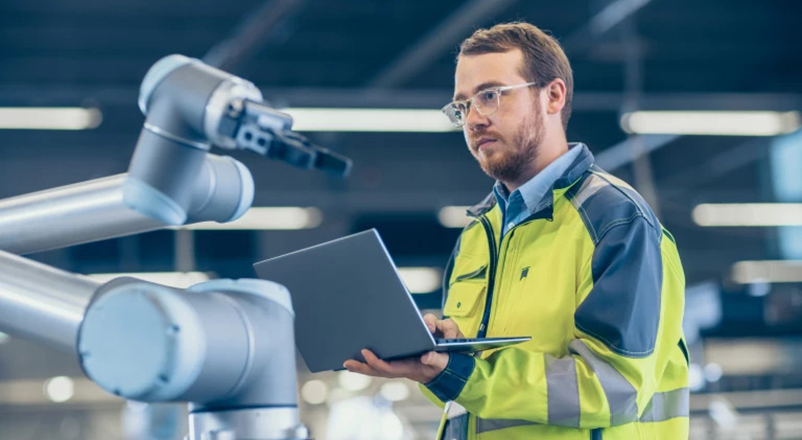
The Fourth Industrial Revolution (4IR) marked the integration of digital, biological, and physical systems through cyber-physical technologies. It emerged in the early 21st century as an evolution of the digital revolution (3IR) and laid the groundwork for the Fifth Industrial Revolution (5IR).
4IR is defined by automation, digitization, and connectivity. Smart systems, AI, robotics, and the Internet of Things (IoT) transformed production, services, and societies into highly interconnected ecosystems.
Automation & Robotics
Use of intelligent machines to replace or augment human labor
Example: machines to replace or augment human labor
Autonomous factories, industrial robots
Artificial Intelligence (AI)
Algorithms capable of perception, learning, and decision-making
Example: Machine learning, natural language processing
IoT & Connectivity
Real-time data flow between billions of devices
Example: Smart homes, industrial IoT
Advanced Manufacturing
Use of additive manufacturing and smart production
Example: 3D printing, flexible manufacturing
Blockchain & Digital Trust
Secure, distributed recordkeeping
Example: Cryptocurrencies, supply chain tracking
While transformative, 4IR introduced challenges that shaped the transition to 5IR:
▢ Industry & Manufacturing - Smart factories, automation of supply chains, rise of Industry 4.0.
▢ Society & Economy - New business models (platform economy), gig economy, digital services.
▢ Energy & Infrastructure - Smart grids, connected devices, energy efficiency optimization.
▢ Governance - Increased focus on cybersecurity, digital identity, and regulation.
These limitations informed the evolution toward 5IR, where human-AI collaboration, sustainability, and resilience became central pillars.
While transformative, 4IR introduced challenges that shaped the transition to 5IR:
▢ Job Displacement due to automation and robotics.
▢ Data Inequality where those controlling data gained disproportionate power.
▢ Cybersecurity Threats from hyperconnectivity.
▢ Environmental Blind Spots where efficiency gains did not equate to sustainability.
These limitations informed the evolution toward 5IR, where human-AI collaboration, sustainability, and resilience became central pillars.